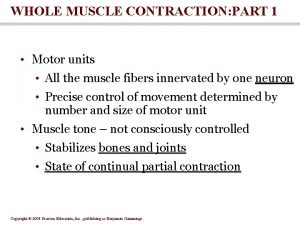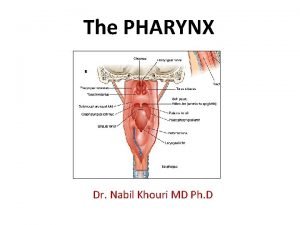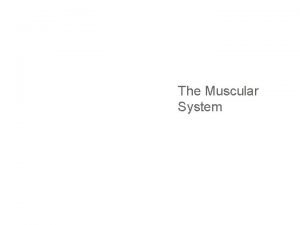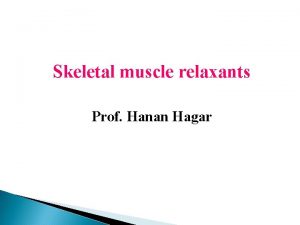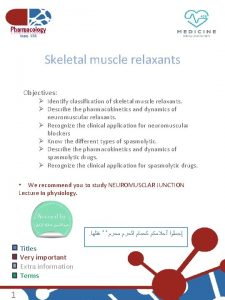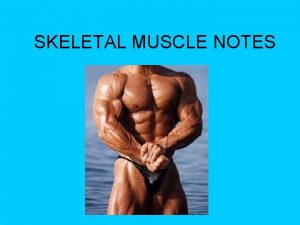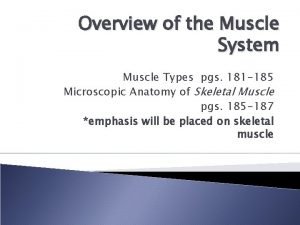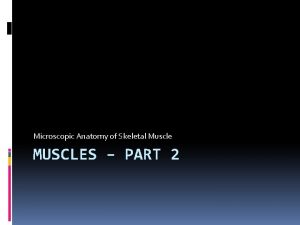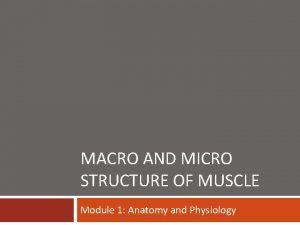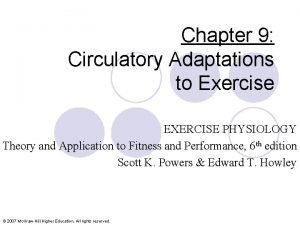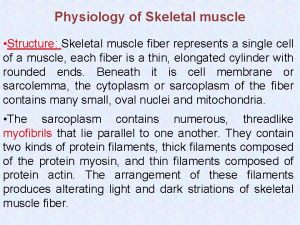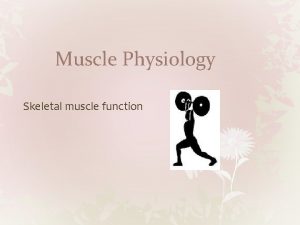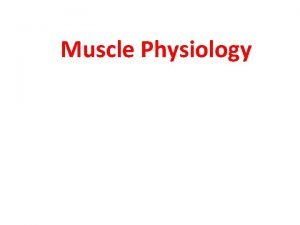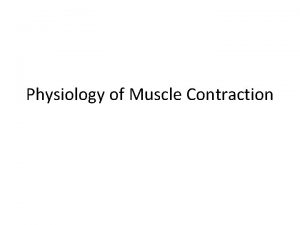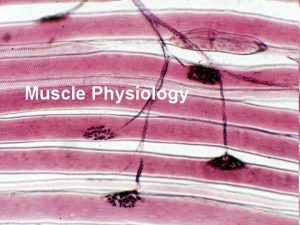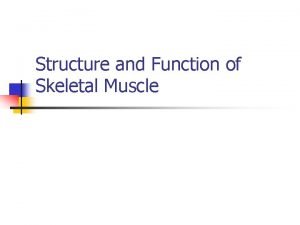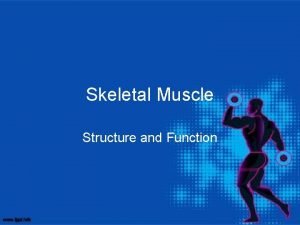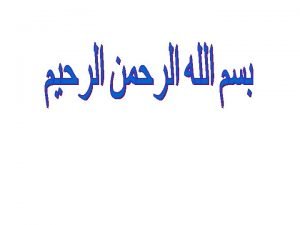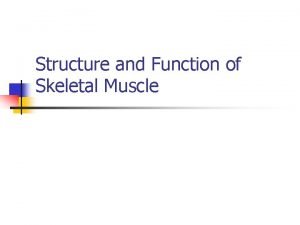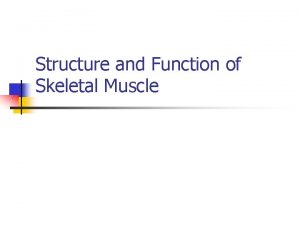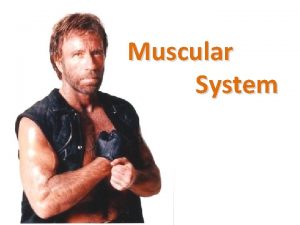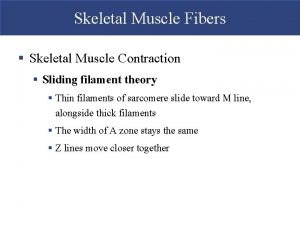CHAPTER Muscle Physiology 1 Chapter Outline Skeletal muscle
















- Slides: 16

CHAPTER Muscle Physiology 1

Chapter Outline Skeletal muscle macrostructure and microstructure Sliding-filament theory of muscular contraction Fiber types Types of muscle action Force production

Three Types of Connective Tissue: Epimysium, Perimysium, and Endomysium

A Motor Unit

Sectional View of a Muscle Fiber

Detailed View of Myosin and Actin Protein Filaments in Muscle

The discharge of an action potential from a motor nerve signals the release of calcium from the sarcoplasmic reticulum into the myofibril, causing tension development in muscle.

Contraction of a Myofibril: Stretched Muscle

Contraction of a Myofibril: Partially Contracted Muscle

Contraction of a Myofibril: Completely Contracted Muscle

Calcium and ATP are necessary for myosin cross-bridge cycling with actin filaments.

Type II, or fast-twitch, muscle fibers are capable of developing higher forces than Type I, or slow-twitch, muscle fibers— especially at higher velocities of muscle action.

The number of cross-bridges that are attached to actin filaments at any instant in time dictates the force production of a muscle.

Force-Velocity Curve for Eccentric and Concentric Actions

Three Arrangements of Muscle Fibers parallel to tendon Unipennate muscle Bipennate muscle

Many factors may affect rate of cross-bridge cycling and thus force, including neural activation, calcium concentration, myosin ATPase activity, preloading, prestretch, muscle fiber type and ultrastructure, fatigue through a variety of mechanisms, and number of contractile components (myosin and actin) in parallel.
 Physiology of skeletal muscle
Physiology of skeletal muscle Smooth muscle cell
Smooth muscle cell Anatomy and physiology chapter 8 skeletal system
Anatomy and physiology chapter 8 skeletal system Fascia of pharynx
Fascia of pharynx The five golden rules of skeletal muscle activity
The five golden rules of skeletal muscle activity Centrally acting skeletal muscle relaxants
Centrally acting skeletal muscle relaxants Skeletal muscle relaxants classification
Skeletal muscle relaxants classification Skeletal muscle relaxants classification
Skeletal muscle relaxants classification Antispasmodic
Antispasmodic Skeletal muscle crash course
Skeletal muscle crash course Comparison of skeletal cardiac and smooth muscle
Comparison of skeletal cardiac and smooth muscle Skeletal muscle relaxants classification
Skeletal muscle relaxants classification Cardiac skeletal and smooth muscle comparison
Cardiac skeletal and smooth muscle comparison Microscopic anatomy of skeletal muscle
Microscopic anatomy of skeletal muscle Macro and micro structure of the skeletal muscle
Macro and micro structure of the skeletal muscle Organisation of skeletal muscles
Organisation of skeletal muscles Skeletal muscle pump
Skeletal muscle pump
